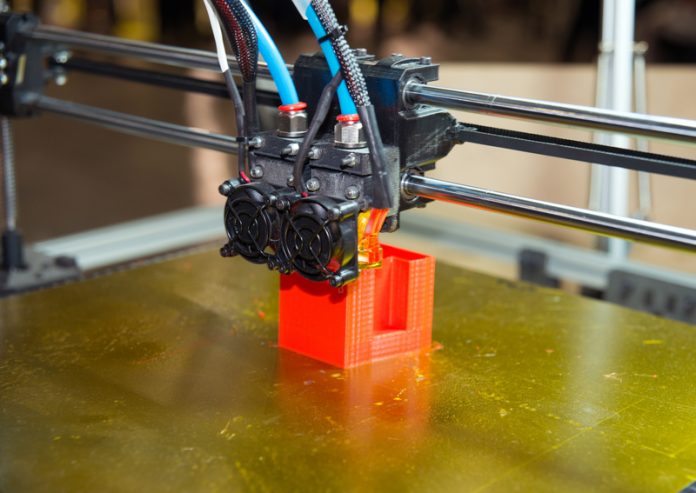Wyn Griffiths, Senior Lecturer at Middlesex University outlines how 3D printing can bring excellent benefits for both students and teachers into the classroom…
3D printers are one of the hottest new innovations in the manufacturing and design world, and this new tech is fast moving past its infancy. To many, it’s a technology that seems futuristic for the time in which we live, never mind the classroom – but nevertheless is one that holds enormous potential not just in the STEM industries, but in schools as well. For the uninitiated, 3D printers allow users to “print” three-dimensional models from computer-created designs. Using plastics, resins, metals – even chocolate – users of the devices can craft designs that would otherwise be tricky, expensive, or impossible to make using traditional manufacturing processes. In short, it’s a game-changer of massive proportions that can give excellent benefits to both teaching and learning.
Boosted attainment
3D printers are being used across a number of different subject areas, and both the skills taught and the sheer ability to create products means that the technology can be applied to a number of different subjects, improving student attainment in the process.
The most obvious subject, design technology, benefits hugely from having 3D printers to hand. Instead of spending long periods of time measuring, crafting, and finishing their products by hand, students can spend more time mulling over the actual design and purpose of their project, creating things that are more considered and complex. Many designs that can be created with a 3D printer are also either difficult or impossible to make using traditional DT equipment, similarly broadening students’ capabilities.
The design software associated with 3D printers can also give IT students an improved degree of support. Following a design from conception all the way to production is rewarding and, compared to merely designing the product, far more engaging.
Art students also have the ability to fully engage with a 3D printer. Creating models that are only restricted by the imagination, a massive range of possibilities emerge, moving past typical artistic processes and forms.
Improved attention
One of the biggest blessings that 3D printers can give to both learners and teachers is a boost to pupils’ attention spans. Government research into the use of the technology has found that students whose attention spans were usually poor were more likely to stay interested throughout the duration of projects that utilised 3D printers.
One of the best things about bringing such cutting edge technology into the classroom is that it plays on both children’s and teenagers’ intense interest in technology. When students see a piece of equipment that they have seen or heard about in the flesh, excitement levels are peaked as the intriguing utility and utterly amazing capabilities of the printers come together to make the learning process unmistakeably interesting.
Simply being able to see real, material, results in a short space of time also gives students motivation to hone their ideas and develop more complex designs, keeping them interested in the process.
A long-lasting resource
If teachers across a variety of subjects are given training in the use of both 3D design software and the use of the printers, a raft of possibilities for teaching are opened up. Biology, chemistry, and physics teachers could use 3D printers to create study aids that show microscopic, molecular, or even atomic structures, turning difficult-to-conceive ideas and processes into a form that can be studied in far more detail than would otherwise be possible if a simple 2D image in a textbook was used.
History departments have the potential to print items of historical significance, creating learning experiences that would before have only occurred during school trips to museums; art departments can design and print out specialised tools; even maths teachers could benefit, using the inexpensive plastic models as teaching aids for algebra, calculus and trigonometry.
If each and every one of a school’s various departments were given access to a 3D printer, over time a vast and permanent bank of teaching aids could be amassed, giving teachers and pupils a quick and easy means to showcase and understand all sorts of information.
It’s the future
Although less than a decade old, 3D printers are poised to completely change the way in which we manufacture goods. Creative and design occupations will easily make use of the tech, while new and innovative technologies will be spawned in the STEM sectors. In the future we’ll also likely see the technology being used in the medical and pharmaceutical fields too.
Allowing learners to get to grips with a tool that they will probably use in their adult lives matters enormously – imagine what digital literacy levels would be like if ICT lessons hadn’t become a school staple decades ago!
Want to know more about the 3D printing process? Take a look at Middlesex University’s 3D printing guide.
Wyn Griffiths BA, MSc, FRSA
Senior Lecturer
Department of Design Engineering and Mathematics
School of Science and Technology
Middlesex University
w.griffiths@mdx.ac.uk
www.mdx.ac.uk/about-us/our-schools/school-of-science-and-technology











